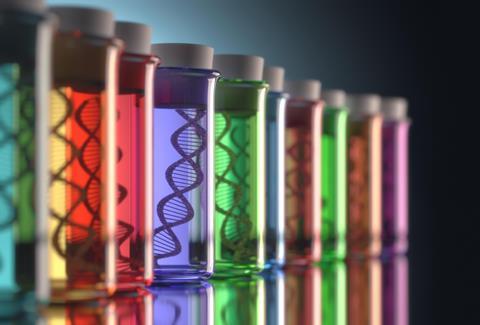Instead, the two are in beautiful harmony, says Sy Garte. Here’s why Christians can feel confident in the truth of scripture and how it supports scientific discovery

Listening to a beautiful harmony is deeply moving. There are, of course, mathematical rules around sound wave frequencies that explain the concept of harmony. But the science cannot explain our response: hearing two lines of music at the same time can be dissonant to the point of painful, or move us to tears of joy.
For something to be harmonious with something else, the two cannot be identical. Harmony requires that two different notes - or ideas, colours, statements, photographs, items of clothing etc - go well together, not only despite their differences, but because of them.
I strongly believe that the teachings of science are harmonious with the tenets of Christianity; two different melodies played on different instruments that, together, result in a spiritually satisfying worldview of God as creator of the natural world, including us.
A history of conflict
The supposed war between science and Christianity is a pernicious lie of relatively recent origin. The idea would have baffled the great majority of scientists, from the beginnings of what we can properly call science in the 16th century right up to the 19th century, when the “conflict model” of science and faith was invented. Although historians today reject it almost unanimously, it is still widely believed by many Christians and nonbelievers.
If logic cannot invalidate the dual nature of electrons, it can’t argue against the truth of Christ’s humanity and divinity
But the truth is that the scientific worldview and the worship of God are fully compatible. When it might appear that these two sources of truth are telling us different things, it generally means we do not properly understand one or both of their messages. We might be hearing two different melodies, but we’ve missed the harmony of the complete piece of music.
There are examples of the harmony between science and faith in quantum physics, molecular biology, information theory, genetic coding, enzymology, energy conversion and gene regulatory networks, to name a few. And some aspects of our cultural and spiritual lives are reflected in scientific work including intelligence, purpose, pathways and brotherhood.
In the affluent West, we have experienced a sharp decline in the position of Christianity in academia, media and influential sectors of society in recent decades – in part due to the tragic misunderstanding of the relationship between science and faith, especially by young people. But this can be overcome by exposure to the truth of the Gospels and good science - not the fake science of social media atheists.
Both/and
One of the central tenets of Christianity is that Jesus Christ is both fully divine and fully human. This doctrine has been dismissed as impossible by sceptics, and often seems problematic to new believers. The idea that anything can be both entirely one thing and entirely something else seems to go against the rules of logic.
And they are correct: this statement is illogical - but that doesn’t mean it’s not true. Truth is not always logical, as scientists discovered when quantum physics established that electrons (as well as protons and photons) are both particles and waves. They exhibit all the characteristics and behaviors of particles, but, at the same time, they have all the properties of waves.
How this is possible is a mystery, but it cannot be denied. If logic cannot invalidate the dual nature of electrons, it can’t argue against the truth of Christ’s full humanity and simultaneous divinity.
Random
Let’s look at one of the “big questions”: Is life nothing but a collection of chemicals mindlessly and randomly interacting with each other? Both science and Christian faith say no. The chemicals in our bodies have a clear purpose - they all have jobs to do. Enzymes, made of proteins, have functions: they catalyse chemical reactions necessary for life, and make sure reactions happen at the right time and without mistakes.
The DNA and RNA in our cells carry information needed to make the right proteins. Plants and animals do many things for well-defined reasons. Life is full of purpose, whether it’s hunting for food, taking care of offspring, or turning leaves toward the sun.
Most people also need a sense of purpose in their lives. Jesus was clear that he came to be among us for a purpose - to teach us how to live and to save our souls. Whether our function is to preach, serve the poor or simply worship him, we should act on whatever purpose we are called to fulfil. First and foremost, we are called to give ourselves to Christ and help spread the good news.
Spread the word
In Romans 1:20, Paul said: “since the creation of the world God’s invisible qualities - his eternal power and divine nature - have been clearly seen, being understood from what has been made.”
The harmony between science and scripture is what we would expect in a world that is God’s wondrous creation. We should be inspired by this knowledge. Whenever you talk about your faith, add the truth of the harmony between science and faith to your work for the Lord.






































No comments yet